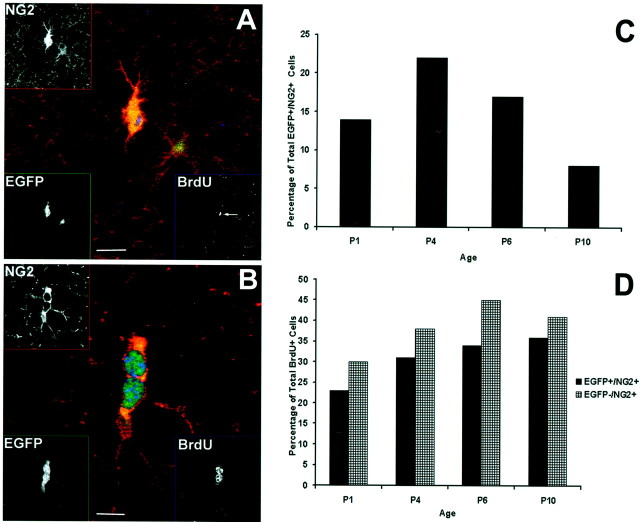Fig. 6.
EGFP+/NG2+cells are capable of division. A, An oligodendrocyte progenitor cell, positive for the transgene, has retracted processes and upregulated NG2 immunoreactivity (Texas Red, EGFP10). This cell also exhibits a small intense region of BrdU staining (Cy5; seearrow in the spliced image) after 4 hr BrdU labeling, suggesting that this cell may be about to undergo mitosis. Separate channel images are shown in the corners.B, A doublet of EGFP+/NG2+ cells that also stain for BrdU after 8 hr labeling, indicating that these cells have recently undergone, or are currently undergoing, mitosis (EGFP10).C, EGFP+/NG2+/BrdU+cells expressed as a percentage of total EGFP+/NG2+ cells shows that the peak of division of this cell population is at approximately P4.D, Both populations of NG2+/BrdU+ cells are expressed as a percentage of total BrdU+ cells, showing that NG2+ cells become the predominant proliferating cell type after P1 and that the ratio of proliferating EGFP-positive to EGFP-negative/NG2+ cells remains relatively constant with age. Scale bars: A, 10 μm; B, 5 μm.

